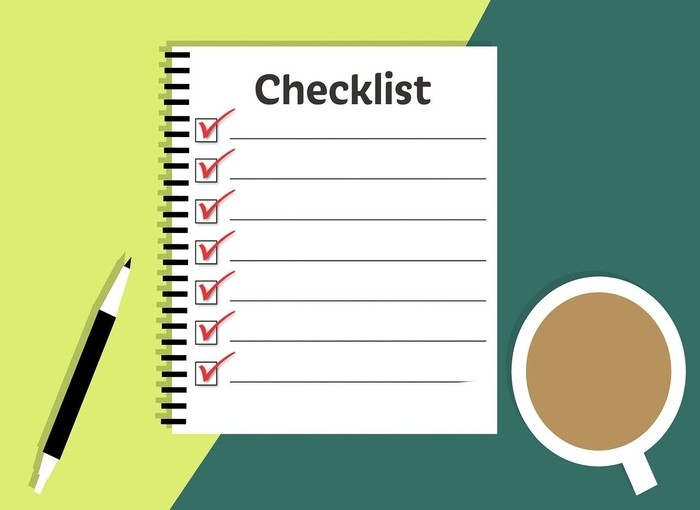Medical Credentialing Checklist
Medical credentialing is an important procedure that guarantees healthcare providers meet the necessary qualifications and standards to offer safe and powerful care to patients. Credentialing simply protects patients and maintains the integrity and reputation of healthcare corporations. Below, we gift a detailed tick list of required documents and critical hints for a smooth credentialing process.
Medical Credentialing Checklist
Details/Documents:
- Personal information
- Recent photograph
- Medicaid and Medicare number
- Copy of National Provider Identifier for NPI number
- UPON number
- The Federal Tax ID number
- Federal DEA and State Controlled Substance Registrations or certificate(s)
- Driver’s license or passport
- Permanent Resident Card, Green Card, or visa status (if applicable)
- Certificates of medical school diploma, training, internship, residency and fellowship
- CME (CME activity for the past three years)
- Board Certificate, mentioning the name of the issuing board and dates of board certification or recertification
- Current active wallet card and certificate with the date of expiration and number
- Updated CV reflecting professional history in a chronological manner
- Current medical affiliations
- Delineation of Privileges Form
- An explanation for disciplinary actions (if any)
- History of malpractice claims with details
- Certificate of Professional Liability Insurance Coverage
- Third-party documentation for all malpractice/disciplinary actions (if applicable)
- Letters of recommendation from three providers
- Military discharge record – Form DD-214 (if applicable)
- Current immunization record and recent TB test result (if available)
- Last 24 months’ case log (if applicable)
- MQSA (if applicable)
- Copy of FLEX, NBME, SPEX or USMLE scores
- Copy of Any: ACLS, APLS, ATLS, BLS, PALS, or NRP certificate
- Locum Tenens Practice Experience Form (if applicable)
- ECFMG certificate number and Fifth Pathway information (for foreign graduates)
The above-mentioned checklist lists all the necessary documents that the medical credentialing services specialist must verify. However, while verifying the documents of different candidates the credentialing specialist must follow some tips for a thorough verification
Create a List of Potential Applicants
Begin by means of compiling a complete listing of applicants. Identify and segregate candidates who meet the simple requirements from folks who no longer streamline the process.
Direct Applicant Communication
Engage with candidates without delay to make clear doubts and request additional records. Clear communication facilitates keeping away from delays and guarantees accurate documentation.
Conduct Background Checks
Perform in-depth history tests to validate the facts furnished by way of applicants. This consists of verifying credentials, affiliations, and privileges.
Investigate Malpractice Claims
Investigate any pronounced malpractice claims thoroughly. Assess the information, resolutions, and any relevant 0.33-celebration documentation to ensure transparency.
Verify Affiliations and Privileges
Confirm cutting-edge and former affiliations with hospitals and medical establishments. Review the delineation of privileges to make certain companies’ qualifications align with their supposed practice.
Stay Updated on Regulations
Healthcare guidelines and credentialing requirements are difficult to alternate. Staying knowledgeable approximately new legal guidelines and compliance requirements are crucial for avoiding mistakes or delays in the credentialing method.
Utilize Credentialing Software
Modern credentialing software can streamline the method by organizing files, tracking expirations, and supplying automatic reminders for renewals. This reduces administrative burden and ensures closing dates are met.
Maintain a Secure Database
Store all applicant statistics securely to shield sensitive facts. A properly maintained database guarantees a brief right of entry to files whilst needed and reduces the danger of misplaced or out-of-place documents.
The Importance of Credentialing
Credentialing plays a pivotal position in ensuring that healthcare companies maintain the very best requirements of affected person care. Here are a few reasons why credentialing is important:
- Patient Safety: Credentialing guarantees that the most effective certified and equipped providers supply care, minimizing the risk of clinical mistakes and ensuring the patient’s safety.
- Compliance with Regulations: Credentialing is a legal requirement for healthcare providers to participate in coverage networks and federal applications which include Medicare and Medicaid.
- Protecting Organizational Reputation: A robust credentialing system protects healthcare groups from liability and preserves their popularity by associating with straightforward experts.
- Streamlining Insurance Reimbursements: Accurate credentialing guarantees that providers are diagnosed by using insurance agencies, facilitating clean and well-timed compensation approaches.
- Enhancing Provider Accountability: Credentialing holds carriers liable for maintaining their qualifications and complying with industry standards, which in the long run advantages patient care and organizational performance.
- Supporting Professional Development: By requiring vendors to replace certifications and take part in continuing training, credentialing promotes lifelong mastering and skill enhancement inside the clinical area.
Conclusion
Don’t treat Credentialing just like an administrative task; it’s far a foundational aspect of constructing belief within the healthcare enterprise. A precise clinical credentialing checklist, coupled with systematic verification practices, is crucial for healthcare corporations. By meticulously reviewing every file and adhering to quality practices, credentialing professionals can ensure that providers meet the highest expert standards. This protects patients and fortifies the integrity of the healthcare system. As the healthcare panorama evolves, staying up to date on credentialing requirements and tactics will continue to be a cornerstone of quality care.



